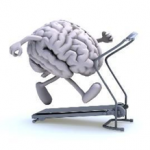martina
New member
- Table of contents
-
- Games
- Keywords
-
- Executive functions
Physical activity is associated with better health: lower frailty, lesser cardiovascular disease or hypertension, better performance in daily life, higher muscle strength and power.
Studies suggest also that physical activity can reinforce executive functions improving inhibition and focused attention[1].
Even when impairment or chronic-disease limit capacity to engage in physical activity the recommendation is to exercise.
Studies suggest also that physical activity can reinforce executive functions improving inhibition and focused attention[1].
Even when impairment or chronic-disease limit capacity to engage in physical activity the recommendation is to exercise.
Did you know?
“Some physical activity is better than none and more of it is even better!”
“Some physical activity is better than none and more of it is even better!”
The WHO’s new physical activity guidelines (2020) recommend 150 minutes of moderate-to vigorous physical activities to replace sedentary behaviours throughout the day and to confer health benefits.
Even when disability or chronic-disease limit capacity to engage in physical activity the recommendation is to exercise at any intensity and with no quantitative threshold for duration, depending on individual capacity[1]. This is important because physical activity of any type is associated with better health: lower frailty, lesser cardiovascular disease or hypertension, better performance of daily activities, higher muscle strength and power; it also prevents falls and decline in bone health.
In addition, a physically active lifestyle is uniquely associated with specific cognitive benefits in older men and women. Studies suggest benefits from physical activity on cognition in the elderly given the accelerated decline of the frontal lobe, which shows greater benefit from physical activity relative to other brain regions. Specifically,
physical activity affects executive functions in the form of improved inhibition and focused attention[1].
Walking helps improve brain performance and enhances cognitive abilities of people with dementia. Specifically, walking for one hour, three times a week is recommended. This physical exercise improves physical well-being and could change the progression of the dementia disease. A study shows how aerobic training among older adults with Mild Cognitive Impairment, a prodromal stage of Alzheimer, can improve executive functions and neuronal efficiency of associated brain areas[2]. Thus, walking may slow cognitive decline in the elderly, even in seniors with a mild memory loss. Since dementia is often related to reduced blood flow to the brain due to a narrowing of the blood vessels that carry oxygen to the cells, the physical activity has a beneficial effect by bringing more blood flow to the brain[3].
Finally, physical activity improves mental health and quality of sleep, reducing symptoms of anxiety and depression.
For older people physical activity might become part of daily activities and leisure time, but it might also be undertaken as a means of transportation (walking or bicycling) or as part of household chores. Physical activity is not necessarily understood as sport or exertion, but as an opportunity to move and be active in one’s daily commitments or routine.
To learn more about beneficial effect of walking see:
References
Bixby, W. R., Spalding, T. W., Haufler, A. J., Deeny, S. P., Mahlow, P. T., Zimmerman, J. B., & Hatfield, B. D. (2007). The unique relation of physical activity to executive function in older men and women. Medicine and science in sports and exercise, 39(8), 1408-1416.
Ramsey, K. A., Meskers, C. G., & Maier, A. B. (2021). Every step counts: synthesising reviews associating objectively measured physical activity and sedentary behaviour with clinical outcomes in community-dwelling older adults. The Lancet Healthy Longevity, 2(11), e764-e772.
World Health Organization. (2020). WHO guidelines on physical activity and sedentary behaviour: web annex: evidence profiles.
Bixby, W. R., Spalding, T. W., Haufler, A. J., Deeny, S. P., Mahlow, P. T., Zimmerman, J. B., & Hatfield, B. D. (2007). The unique relation of physical activity to executive function in older men and women. Medicine and science in sports and exercise, 39(8), 1408-1416.
Hsu CL, Best JR, Davis JC, Nagamatsu LS, Wang S, Boyd LA, Hsiung GR, Voss MW, Eng JJ, Liu-Ambrose T. Aerobic exercise promotes executive functions and impacts functional neural activity among older adults with vascular cognitive impairment. Br J Sports Med. 2018 Feb;52(3):184-191. doi: 10.1136/bjsports-2016-096846. Epub 2017 Apr 21. PMID: 28432077.
Tomoto T, Liu J, Tseng BY, Pasha EP, Cardim D, Tarumi T, Hynan LS, Munro Cullum C, Zhang R. One-Year Aerobic Exercise Reduced Carotid Arterial Stiffness and Increased Cerebral Blood Flow in Amnestic Mild Cognitive Impairment. J Alzheimers Dis. 2021;80(2):841-853. doi: 10.3233/JAD-201456. PMID: 33579857
[1] Bixby, W. R., Spalding, T. W., Haufler, A. J., Deeny, S. P., Mahlow, P. T., Zimmerman, J. B., & Hatfield, B. D. (2007). The unique relation of physical activity to executive function in older men and women. Medicine and science in sports and exercise, 39(8), 1408-1416.
[2] Hsu CL, Best JR, Davis JC, Nagamatsu LS, Wang S, Boyd LA, Hsiung GR, Voss MW, Eng JJ, Liu-Ambrose T. Aerobic exercise promotes executive functions and impacts functional neural activity among older adults with vascular cognitive impairment. Br J Sports Med. 2018 Feb;52(3):184-191. doi: 10.1136/bjsports-2016-096846. Epub 2017 Apr 21. PMID: 28432077.
[3] Tomoto T, Liu J, Tseng BY, Pasha EP, Cardim D, Tarumi T, Hynan LS, Munro Cullum C, Zhang R. One-Year Aerobic Exercise Reduced Carotid Arterial Stiffness and Increased Cerebral Blood Flow in Amnestic Mild Cognitive Impairment. J Alzheimers Dis. 2021;80(2):841-853. doi: 10.3233/JAD-201456. PMID: 33579857.
[1] Ramsey, K. A., Meskers, C. G., & Maier, A. B. (2021). Every step counts: synthesising reviews associating objectively measured physical activity and sedentary behaviour with clinical outcomes in community-dwelling older adults. The Lancet Healthy Longevity, 2(11), e764-e772.
World Health Organization. (2020). WHO guidelines on physical activity and sedentary behaviour: web annex: evidence profiles.
[1] Bixby, W. R., Spalding, T. W., Haufler, A. J., Deeny, S. P., Mahlow, P. T., Zimmerman, J. B., & Hatfield, B. D. (2007). The unique relation of physical activity to executive function in older men and women. Medicine and science in sports and exercise, 39(8), 1408-1416.
Last edited:


